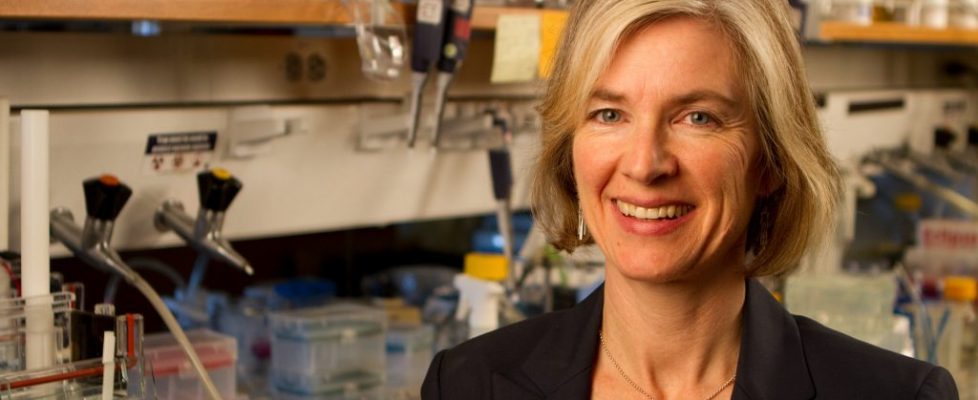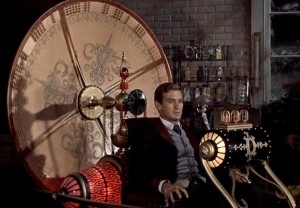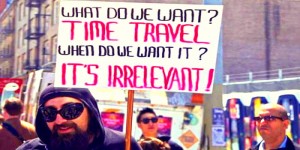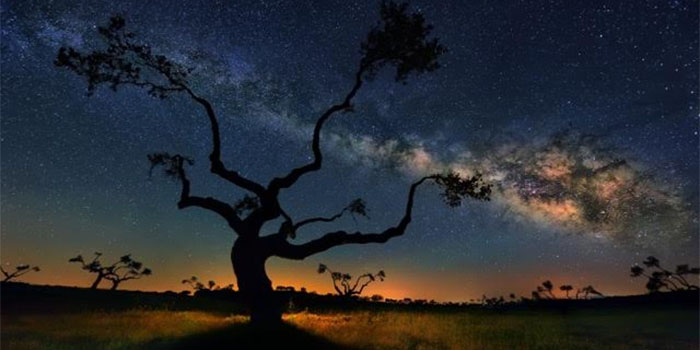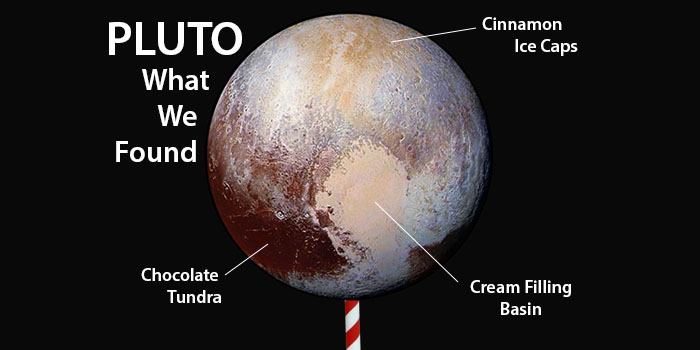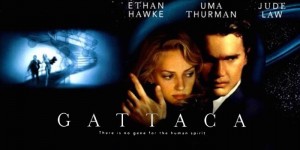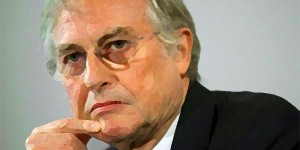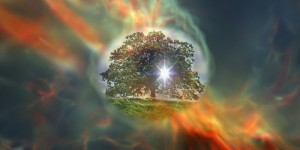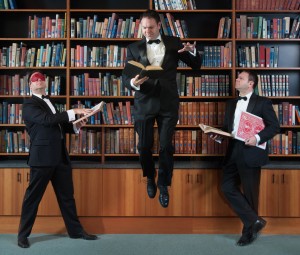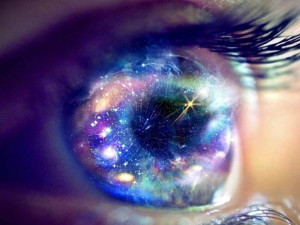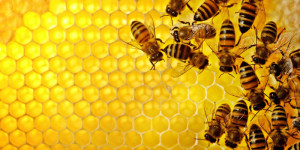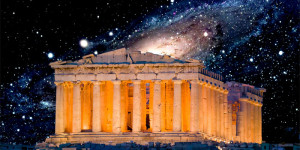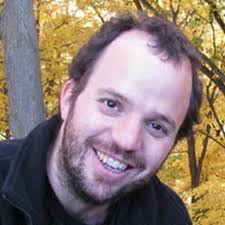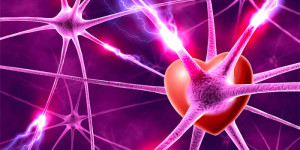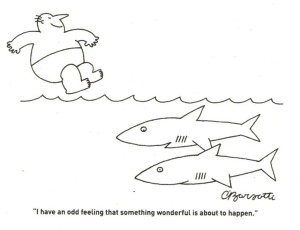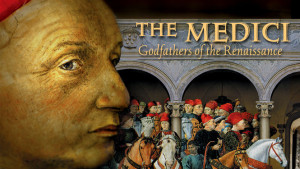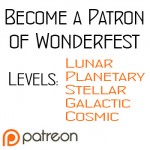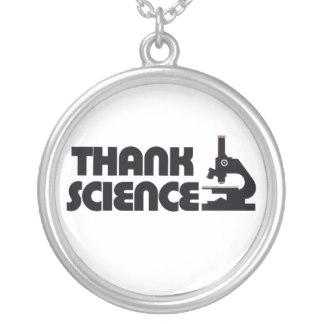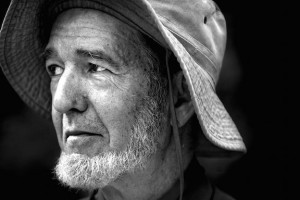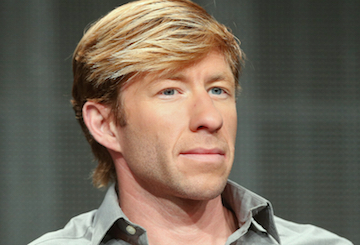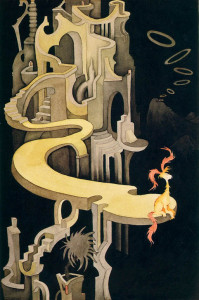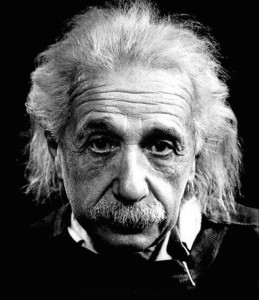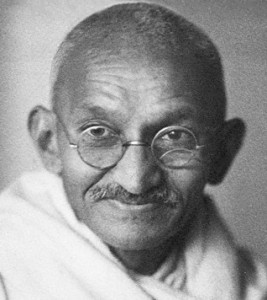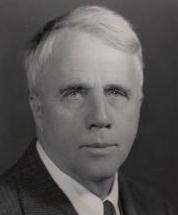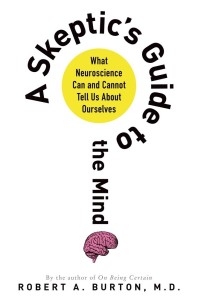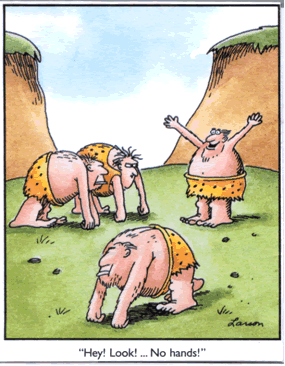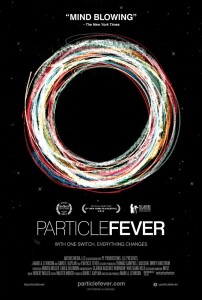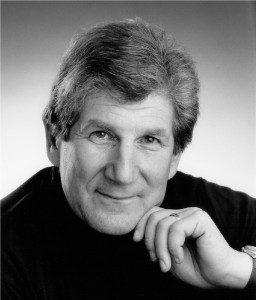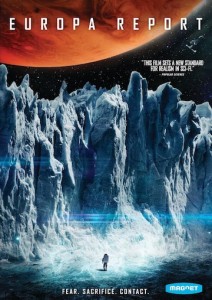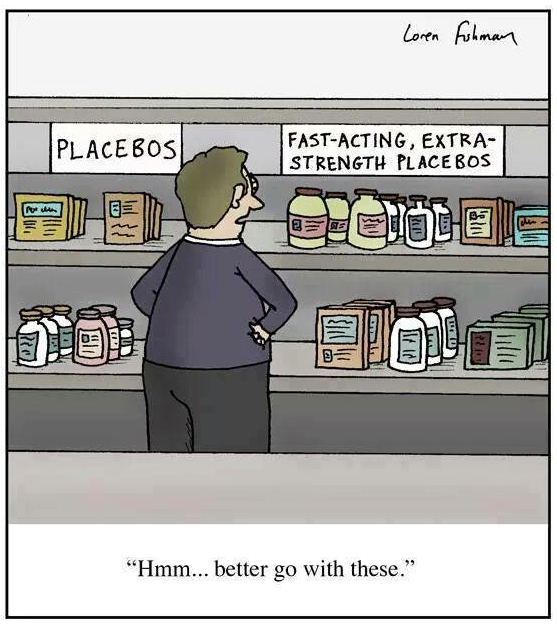Gene Editor Wins ’17 Sagan Prize, Jan 17
Dr. Doudna is globally known for her discovery and development of the CRISPR/Cas9 gene editing system which the New York Times says has "revolutionized humans' ability to edit DNA," allowing genetic changes that can be passed on to future generations. Dr. Doudna's numerous and rich science popularization efforts include a TED talk, RadioLab & Science Friday interviews, and a best-selling popular book on gene editing and its implications.Dr. Doudna will receive the Sagan Prize — including its $5000 cash award — from Wonderfest founding Board member Dr. Eugenie Scott during a ceremony in Berkeley on January 17, 2018.
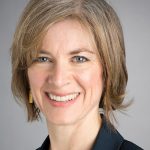
Dr. Jennifer Doudna
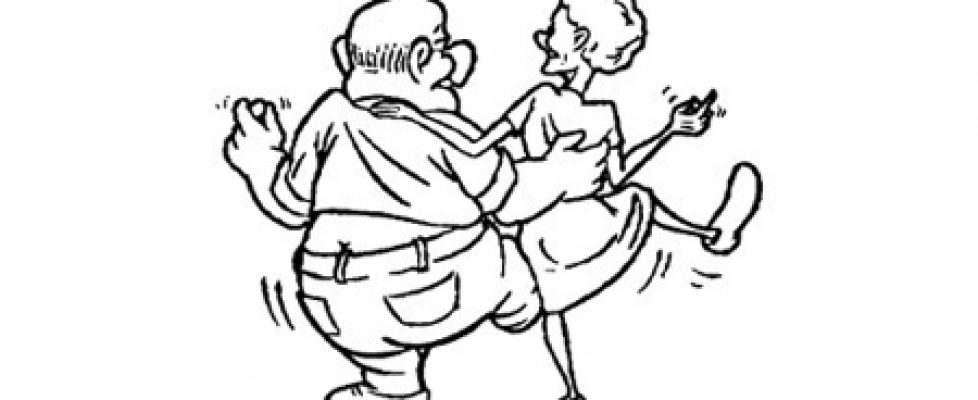
Healthy Aging – Jan 10
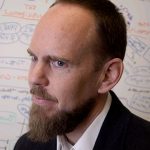
Dr. Gregory Tranah
Map: [http://bit.ly/1X1hJTf]
Richard Dawkins — My Life In Science, Oct 3, San Jose
Wonderfest joins the Commonwealth Club Silicon Valley in presenting Richard Dawkins in discussion of his second memoir, Brief Candle in the Dark.
Richard Dawkins is a British evolutionary biologist, ethologist, science writer, and outspoken atheist. In 1976, he published his first book, The Selfish Gene, which emphasized the gene as the key unit of biological evolution, and coined the term meme as the unit of cultural evolution. In 2013, Dawkin’s Appetite for Wonder chronicled “the making of a scientist” up to the appearance of The Selfish Gene. Now, with Brief Candle in the Dark: My Life in Science, Dawkins discusses his later life as “Darwin’s Rottweiler” and as a leader of the New Atheism movement.
The Physics of Time Travel, Jan.9
Dear Wonderfest friend,
Physicist Ken Wharton may know as much about time travel as anyone on Earth. The crucial question becomes: Just how much can be known about this most problematic of sci-fi themes?!
Dr. Wharton is Professor of Physics & Astronomy at San José State University. With generous reference to popular movies, he will share his insights at Oakland’s Chabot Space and Science Center on Saturday, January 9, starting at 8:00 PM.
If The Time Machine, Back to the Future, and The Terminator stir fond memories — and perhaps even ardent hopes — please join Wonderfest at Chabot for Ken Wharton’s The Physics of Time Travel.
Wondrous regards,
Tucker Hiatt, Founding Director
P.S. Although “the end of the year” may not mean much to time travelers, it can herald a time of generosity for tax payers. Will you please consider a year-end donation to Wonderfest, the Bay Area Beacon of Science? Your gift is fully tax-deductible, and every penny will further Wonderfest’s goal of enlarging and enriching the concept of scientific community. Happy New Year!
Outstanding Space Presentations in Late October
Dear Wonderfest friend,
Eugenics (Sep.30), Dawkins (Oct.3), and VERY “First Things” (Oct.5)
Dear Wonderfest Friend,
We have three terrific speaker/topic combos coming your way in the next two weeks.
On Wednesday, September 30, at 7pm, Wonderfest joins SF in SF at the Balboa Theater in presenting a special screening of the 1997 sci-fi thriller GATTACA. Complete info and ticket purchase are available here: <http://wonderfest.org/gattaca/>.
What makes this screening so “special” is commentary and Q&A with bioethics expert Hank Greely. Dr. Greely is TWICE a Stanford professor: of law and of genetics. He also directs Stanford’s Center for Law and the Biosciences. Dr. Greely first shared insights with a Wonderfest audience at our 2012 panel discussion entitled Does Corporate Funding Corrupt Science? Much more recently, he was the go-to expert on KCBS radio after the California State legislature voted to allow assisted suicide. You will not find a better speaker on genetics and society than Professor Greely.
***
Thanks to the Commonwealth Club Silicon Valley… On Saturday, October 3, at 2pm, Wonderfest assists in presenting Richard Dawkins at San Jose State’s Morris Dailey Auditorium. Full info and discount ticket purchase are available here: <http://wonderfest.org/richard-dawkins/>.
The celebrated and controversial British evolutionary biologist, writer, and atheist will speak about his latest book, A Brief Candle in the Dark: My Life in Science, the second of two memoirs describing his intriguing life. Books will be available for purchase and for signing.
***
On Monday, October 5, at 7pm, Wonderfest presents Stanford physicist Tom Abel on the “First Things in the Universe” at PianoFight in San Francisco. Complete information and registration info are available here: <http://wonderfest.org/first-things/>.
Professor Abel is the director of the Kavli Institute for Particle Astrophysics and Cosmology at Stanford. His speciality is computer simulation of the early universe. The full title of this Wonderfest talk is “How the First Things in the Universe Came About and How They Ended Up Within Us.” Expect to see cutting-edge computer animations that are as beautiful as they are mind-stretching.
Wondrous regards,
Tucker Hiatt
Founding Executive Director
P.S. Most-excellent Wonderfest friend Andrew Fraknoi invites us to experience a total eclipse of the Moon in the early evening of Sunday, September 27. “It should be easily visible and quite spectacular from California, with the moon rising already partly eclipsed,” writes Andy. Here is his outstanding blog: <http://fraknoi.blogspot.com>.
P.P.S. Here’s an early glimpse of a Wonderfest Halloween event to be featured in our next newsletter: The Official Houdini Séance – 2015. Even though this link presents a Kickstarter campaign that is almost “funded,” it will still allow the purchase of tickets to the Séance — and you can still support the science-education benefits of “super funding.” Please do take a look at this upcoming spectacle of science, history, skepticism, and magic.
Science and Séance in SF on Halloween 2015
Dear Wonderfest friend,
Do the similar-sounding words science and séance have similar origins? No such luck (for séance). Both words come from Latin verbs: science from scire, to know; séance from sedere, to sit! Wonderfest, the Bay Area Beacon of Science, promotes knowing. And, personally, as much as I do enjoy a good sit, knowing is better.
Wonderfest joins the Bay Area Science Festival, Bay Area Skeptics, and the Pan-Pacific International Exhibition in presenting The Official Houdini Séance 2015 at San Francisco’s Brava Theater on the anniversary of Houdini’s death, Halloween! That word “Official” is not hollow; we are backed by the estate of magician Sid Radner, friend and protégé of Houdini’s brother, Hardeen.
The 2015 Official Houdini Séance will be a spectacular presentation of science, skepticism, history, escapes, and magic. Speakers include Michael Shermer, Skeptics Society Founder, and Melina Uncapher, UCSF neuroscientist. To learn more and to purchase tickets, please visit our Kickstarter page. (All the links in this newsletter point to the Kickstarter page, so you might as well give in!)
The most controversial figure at our Houdini event is sure to be self-described “psychic medium” Terrie Huberman. Terrie will lead the Earnest Séance, the first of two séances to take place that evening. Magician/Mentalist Paul Draper will lead the second, the Magical Séance, where remarkable things are sure to happen!
Please do learn more about our undertaking (*ahem*) by watching magician Robert Strong’s sparkling 2-minute video that introduces the Kickstarter campaign. Robert, pictured below, is a member of Wonderfest’s Board of Directors, and he has risen (*ugh*) to this wonderful séance production challenge. Robert has put his head and his heart — not to mention his remarkable network of magical associates — into producing a Halloween event not to be missed.
But even if you can’t attend The Official Houdini Séance 2015, you can still contribute to the cause of science popularization by making a tax-deductible donation to Wonderfest. Just click on the very first Kickstarter “reward” option — supporting science/knowledge even when séancing/sitting somewhere else!
Wondrous regards,
Tucker Hiatt
Founding Executive Director
The Physiology of Awe, July 28
Dear Wonderfest friend,
On Being Human (5/11) and the Evolution of Science (5/13)
Dear Wonderfest friend,
Dr. Peter Schattner is a physicist and biologist who has something profound to tell us about being human. Peter earned his physics PhD at MIT under Nobel Laureate Steven Weinberg. Peter has held research and teaching positions in computational biology and biomedical engineering as well as in physics. His most recent work, Sex, Love, and DNA, focuses on molecular biology, and was named the best general nonfiction book at the 2015 Great Southeast Book Festival.
Peter Schattner will enlighten and inspire us at San Francisco’s PianoFight on Monday, May 11, at 7 PM. Please come to this FREE event early to get a good seat and to order tasty food and drink. Get details and register (and donate to the Wonderfest cause!), here.
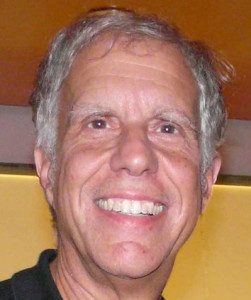 ***
*** 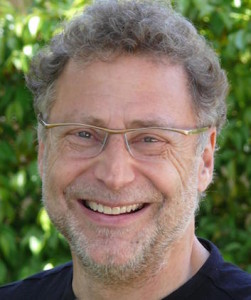
Dr. Leonard Mlodinow is a physicist and an award-winning science writer. He has co-written two books with Stephen Hawking: A Briefer History of Time and The Grand Design. Leonard has also taught at Caltech, debated Deepak Chopra on ABC’s Nightline, and written screenplays for MacGyver and Star Trek. His latest book, The Upright Thinkers, explores “the human journey from living in trees to understanding the cosmos,” and will be the principal subject of this Wonderfest collaboration with the Commonwealth Club Silicon Valley.
Bees (Apr.6), a New Venue, & Our Science Heritage (Apr.15)
Dear Wonderfest friend,
Bees are amazing critters. They build ideal hexagonal honeycombs; they communicate through dance; and they solve the “traveling salesman” math problem while pollinating $20 billion worth of US crops each year. On Monday, April 6, at 7 PM, Wonderfest and Ask a Scientist present Noah Wilson-Rich, PhD — author, beekeeper, and Chief Scientist at The Best Bees Company — on Our Future with Bees.
Please join Dr. Wilson-Rich at a brand new Wonderfest venue: PianoFight. This new club is located in San Francisco at 144 Taylor Street. We and the bees will occupy PianoFight’s main dining/performance area where “classic California Americana and a twist on nostalgic concessions” will be served along with beer, wine, and vintage cocktails. This event is FREE, but please register here. Also, arrive early to enjoy the food & drink AND to make sure that you get a seat!
Nine days later, on Wednesday, April 15, Wonderfest and Ask a Scientist will take a deep look at our ancient scientific heritage when we present The Sciences in Ancient Greece and Rome: How Far Did They Get? at Oakland’s Chabot Space and Science Center. Our dynamic speaker, Dr. Richard Carrier, will reveal just how much the Greeks and Romans achieved — and how close they got to their own scientific revolution. Please purchase tickets directly from Chabot.
Wondrous regards,
Tucker Hiatt
Love in the Time of Facebook, March 18
Dear Wonderfest friend,
Febrile February: Two Types of Fever
Dear friend of Wonderfest,
“Full disclosure: I cried at a movie about particle physics,” wrote Scientific American’s Clara Moskowitz. Clara is not alone: Particle Fever made me teary-eyed, too. Repeatedly. During both first AND second viewings! I cried over the joy and dedication of a community of ingenious explorers: the scientific community.
Wonderfest and the Commonwealth Club Silicon Valley present a special screening of PARTICLE FEVER on Tuesday, February 10, in Palo Alto. What makes this screening so special is follow-up commentary and Q&A with producer David Kaplan. Dr. Kaplan, physics professor at Johns Hopkins University, is the principal “actor” in Particle Fever.
The movie presents the inside story of six scientists — three of them Wonderfest speakers* — seeking to unravel deep DEEP mysteries of the universe. Their tool, our tool, is the Large Hadron Collider, conducting the biggest and most expensive experiment of all time. 10,000 scientists from over 100 countries join forces to recreate conditions that existed just moments after the Big Bang. Their ultimate goal is to confirm or improve or undermine or overthrow the Standard Model of Particles and Fields: the “parts list” for construction of … everything.
***
Three evenings after Particle Fever, we will explore another, older fever: the febrile fires of LOVE. On February 13, back in San Francisco, Wonderfest and Ask a Scientist present LOVE AMONG THE NEURONS: A Neuroscience Guide to Valentine’s Day. UCSF psychiatrist and author Thomas Lewis will offer rich insights into romantic fever among living creatures, particularly the human type.
Frenchman Blaise Pascal famously wrote, “The heart has reasons that reason cannot comprehend.” Perhaps. But in Dr. Lewis’s book A General Theory of Love (Random House, 2000), Lewis and his co-authors offer “An insightful look at the science of human emotions. … A rare example of the fusing of scientific rigor with literature eloquence.” – S.F. Examiner. A General Theory of Love has been translated into Chinese, Japanese, Spanish, and several other languages, … but not into French. Perhaps love is still fundamentally unreasonable in the land of Pascal. 😉
But not in the Bay Area! I hope you will join Wonderfest for these two explorations of fever in early February: Particle Fever on the 10th, and Love Among the Neurons on the 13th.
Wondrous regards,
Tucker Hiatt
Founding Executive Director
_________________
* Nima Arkani-Hamed (Wonderfest 1998), Savas Dimopolous (Wonderfest 2002), and David Kaplan (now!).
Good Philosophy, a 2-for-1 deal, and Bad Physics
Dear Wonderfest friend,
- Our Science Envoy Program trained Cal and Stanford PhD students to become the next generation of expert science communicators — the Carl Sagans, Jane Goodalls, and Neil deGrasse Tysons of tomorrow.
- Wonderfest injected accurate and engaging science into other groups’ educational projects. Check out our work with TED-Ed, Chabot Space & Science Center, and the Commonwealth Club.
- With funding from AT&T, Wonderfest produced Physics Meets the Monsters, a video series that encourages the study of introductory physics. For so many youngsters, physics can be THE gateway course to advanced science and engineering … and to fundamental intellectual growth.
Scientific Thanksgiving, Jared Diamond, and a Good Night’s Sleep
Dear Wonderfest friend,
This Thursday, when hands clasp around the Thanksgiving table, I may not say it, but I’ll think it: I’m thankful for science. Clean water, electricity, anesthetics, and high-speed travel have made my life better than the sweetest dreams of any pre-20th-century monarch. The modern benefits of science are practically innumerable.
Beyond these material goods are psycho-social goods that go hand-in-hand with science: curiosity, democracy, the very concept of progress. And consider free speech. Not only does science thrive in — and therefore encourage — an atmosphere of intellectual freedom, science confirms the general utility of all forms of free speech. G.K. Chesterton put it this way:
The theory of free speech, that truth is so much larger and stranger and more many-sided than we know of, that it is very much better at all costs to hear every one’s account of it, is a theory which has been justified upon the whole by experiment, but which remains a very daring and even a very surprising theory. It is really one of the great discoveries of the modern time.
This Thanksgiving, I will express appreciation for the scientific outlook AND for the people who promote it. We, at Wonderfest, will do our part* in early December by presenting the insights of UCLA geographer Jared Diamond and UC Berkeley psychologist Matthew Walker.
On Tuesday, December 9, Wonderfest joins the Commonwealth Club in presenting An Evening with Jared Diamond in San Francisco’s Castro Theater. Diamond became well-known by writing The Third Chimpanzee, and then truly famous for his Guns, Germs, and Steel. At the Castro Theater event, Diamond will focus on the ideas in his latest book The World Until Yesterday: What Can We Learn from Traditional Societies?
Three evenings later, on Friday, December 12, Wonderfest joins Oakland’s Chabot Space and Science Center in presenting Mysteries of the Sleeping Brain with Cal psychologist Matt Walker. Professor Walker has already spoken for a Wonderfest audience — in San Francisco. But his presentation was so good that we had to share the wealth with the East Bay. It truly was one of the outstanding presentations in Wonderfest’s 17-year history!
If/when your hands clasp in thanksgiving this Thursday, I hope you’ll keep science in mind.
Wondrous regards,
Tucker Hiatt
Founding Executive Director
___________________
* If you would like to do your part, too, won’t you consider helping Wonderfest to promote the scientific outlook? Here are three ways you can help: (1) Let AmazonSmile donate 0.5% of your purchase prices to Wonderfest whenever you shop via this special link; (2) Make a one-time Wonderfest donation here; (3) Make regular donations to the cause of science education and popularization by becoming a Wonderfest Patron. All Wonderfest donations are fully tax-deductible.
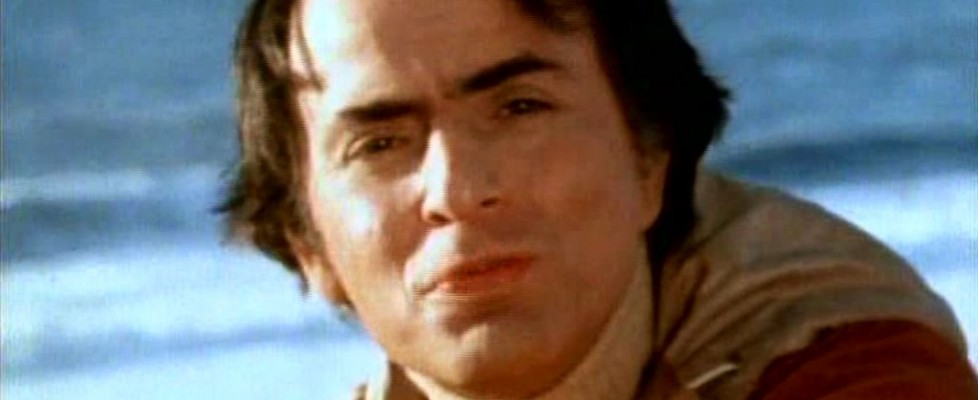
Gifts of Carl Sagan
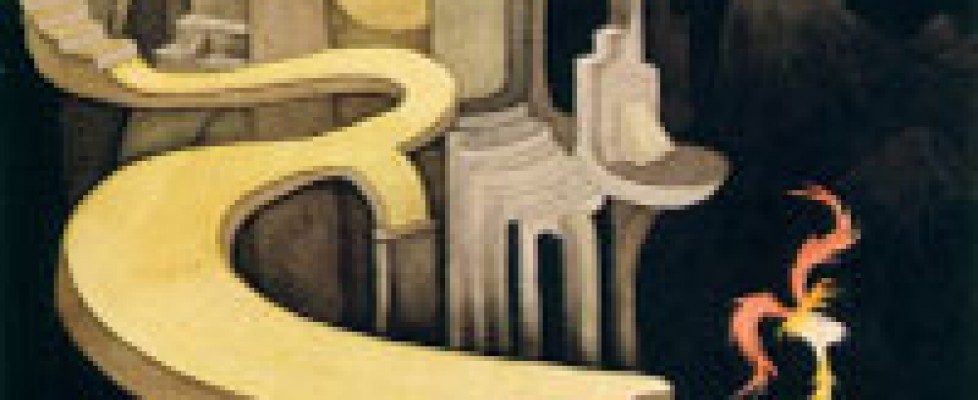
Science, Baseball, and Cosmic Purpose
Dear Wonderfest friends,
A simple confession: I don’t know the purpose of life.
Oh, maybe I’ve discovered the purpose of my life. But I don’t know the cosmic Purpose of life — Purpose with a capital P. The absence of cosmic Purpose is sometimes cited as the crucial shortcoming of modern societies. Such societies — such people — may be prosperous and even happy, but they can feel a little empty inside.
Consider, below, the Pink-Tufted Small Beast in a Night Landscape by Theodore Geisel (Dr. Seuss). Perhaps we are the beast. Humanity is well-coiffed, even regal in appearance, and slightly absurd. We sit at the edge of our eerily beautiful world, facing out toward a vast and mysterious universe … with our eyes closed.
What can give such a life Purpose? Fortunately, our eyes are not closed. The scientific enterprise, in particular, opens our eyes, pierces the darkness, and offers at least the hope of genuine Purpose. What irony! For 2500 years, Science has obviated the gods with purpose-shredding naturalism. And now, Science seems to be our best hope of finding Purpose — in the exploration of Nature itself.
“I have never imputed to Nature a purpose or goal, or anything that could be understood as anthropomorphic. What I see in Nature is a magnificent structure that we can comprehend only very imperfectly, and that must fill a thinking person with a feeling of humility. This is a genuinely religious feeling that has nothing to do with mysticism.” – Einstein
“Humility,” for sure. But with our humility comes a whiff of cosmic Purpose: “Our life is a long and arduous quest after Truth,” said Gandhi. Poet Robert Frost put it directly and simply: “The best thing that we’re put her for’s to see.” And Einstein, once again: “The important thing is not to stop questioning. Curiosity has its own reason for existing. One cannot help but be in awe when he contemplates the mysteries of eternity, of life, of the marvelous structure of reality. It is enough if one tries merely to comprehend a little of this mystery every day. Never lose a holy curiosity.”
***
Your curiosity about baseball(!) may not be holy, but I hope it’s deep enough to entice you to San Francisco’s StrEat Food Park on Wednesday, September 24, for The Physics of Baseball. Full details about this free event are here:
Whence Our Humanity?
What Are You Made Of?
Dear friend of Wonderfest,
“LET’S FIND OUT WHAT YOU’RE MADE OF!” yelled the scout troop leader. Since we were a group of wimpy greenhorns, this was not going to be much of a survival hike. At most, this stroll through the woods would generate a blister or two. Nobody would perish.
Nonetheless, even now, I appreciate the troop leader’s sentiment: he wanted us to learn more about ourselves. Self-knowledge (where “self” encompasses the entire universe!) is the impetus behind Wonderfest’s presentation of What Are You Made Of? at St. Helena’s Cameo Cinema next Monday evening, July 21. The enigmatic answer, by the way, seems to be well-captured by the blandly-titled Standard Model diagram below.
Our program will begin at 8:30 PM with a special screening of Particle Fever. This is the highly acclaimed cinematic account of the biggest, most complex experiment ever conceived: the Large Hadron Collider’s exploration of subatomic structure … i.e., of everything! And at the heart of that structure, as the Standard Model diagram asserts, is the elusive, hyper-potent Higgs boson. Evidently, the Higgs particle/field gives mass — the substance of being — to every bit of the material world.
After the movie, we will be treated to the expert commentary of UC Berkeley’s Surjeet Rajendran, a physics professor who understands both the Higgs AND the making of Particle Fever. Dr. Rajendran is a very close friend of David Kaplan, a star and producer of the movie; both physicists have made public appearances together to elucidate — and to spread — Particle Fever.
To catch the fever, yourself, please start here.
***
The Higgs boson walks into a catholic church. The priest asks, “What are YOU doing here?” The Higgs says, “You can’t have mass without me!” …Ugh… Later the same day, the news desk editor declares, “I don’t care what the Higgs boson headline is, just make sure we spell HADRON correctly!”
***
After the heaviness (*ahem*) of What Are You Made Of?, Wonderfest will go light with Science Laughs — back in San Francisco on Wednesday, July 23. Science comedian Norm Goldblatt will crack wise with jokes much better than those “standard models” above. Norm has appeared at comedy clubs throughout the Bay Area, on NPR’s Science Friday, and at the US Science and Engineering Festival in Washington DC. I hope you will join us at this FREE event by starting here.
Wondrous and risible regards,
Tucker Hiatt
Founding Executive Director
Saganesque: NASA’s Chris McKay
Dear friend of Wonderfest,
Carl Sagan means a lot to Wonderfest. Since 1997, the fine print on our literature has often read: “Dedicated to the memory of Carl Sagan.” And from 2002 through 2010, Wonderfest proudly awarded the $5000 Carl Sagan Prize for Science Popularization to nine Bay Area researchers who “contributed mightily to the public understanding and appreciation of science.”
Wonderfest lost funding for the Sagan Prize in 2011.* Since then, I have fantasized about which public-spirited scientists most deserve a re-funded Sagan Prize. Nobody comes to mind more often than NASA planetary scientist Chris McKay.
Evidently, Dr. McKay is a man who just can’t say “No” to speaking invitations. His name appears with remarkable regularity on Bay Area science event calendars. And a panel discussion on Mars, or on space travel, or on the origin (or end!) of life will be without him only if he is off doing research in the Atacama Desert or the Canadian Arctic.
Like Carl Sagan in his heyday, Chris McKay can opine with authority on astronomy, biology, chemistry, geology, and physics. Significant, too, is McKay’s willingness to address controversial science topics. He has taken provocative public positions on the terraforming of Mars, on human-vs.-robotic space exploration, and on the likelihood of extraterrestrial life and intelligence.
The creative photo of Chirs McKay, at left, belies his friendliness and sense of humor. The image comes from a biographical feature article in the March issue of Discover magazine. As if to proclaim McKay’s “public scientist” status even more forcefully, the June issue of Scientific American includes his article (with Victor Parro García) entitled How to Search for Life on Mars. This researcher cares about public enlightenment!
Accordingly, on Monday evening, June 30, at SoMa StrEat Food Park, Chris McKay will make his record-setting seventh Wonderfest appearance! The Road to Europa is a FREE event produced in collaboration with SF in SF. Dr. McKay will present expert commentary on perhaps the best science fiction film of 2013, Europa Report. After the movie’s screening, Chris will address its three key scientific features: the survivability of a trip to the Jupiter system; human vs. robot exploratory performance; and the type of life that might conceivably call Europa’s ocean “home.” What a deep treat it will be!
I cannot praise Chris McKay more highly than to describe his contributions to Bay Area science as Saganesque. Someday, Chris WILL be able to accept Wonderfest’s revived Carl Sagan Prize — although, as a NASA employee, he might have to refuse the cash! Until then, the best we can do is to offer him our eager questions and thunderous applause. I hope you’ll register for The Road to Europa, and enjoy the penetrating insight, dry wit, and fierce dedication of Dr. Christopher P. McKay.
Wondrous regards,
Tucker Hiatt, Founding Executive Director
___________________
* Annual Reviews generously supported the Sagan Prize for nine years. If you know of another public-spirited organization that might help Wonderfest to reestablish this highly successful encourager of public science, please drop me a line at TuckerAtWonderfest.org.
Dinosaur Pizza and Extra-strength Placebos
Dear friend of Wonderfest,
The sky split open, and “something like the sun fell” through. This was one eyewitness account of last year’s meteor strike over Chelyabinsk, Russia. The 60-foot-wide, 13,000-ton hunk of asteroid exploded into several pieces, with consequences that injured 1000 people. The meteor’s total energy of impact equalled 30 Hiroshima bombs.
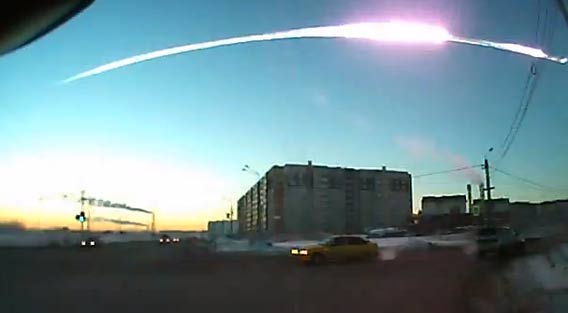 NASA planetary impact expert Kevin Zahnle reminds us that Earth is constantly struck by interplanetary debris: mostly tiny bits, but occasional big chunks, too. When a truly huge object smacks Earth, the devastation is spread far beyond the point of contact. Impact backsplash rocks are flung all over the globe. As they fall back to Earth, this backscatter reentry debris superheats the entire atmosphere. The dinosaurs, for example, were globally roasted as air temperatures rose to ~700°F (pizza oven temperatures!) following the K-Pg impact of 66 million years ago.
NASA planetary impact expert Kevin Zahnle reminds us that Earth is constantly struck by interplanetary debris: mostly tiny bits, but occasional big chunks, too. When a truly huge object smacks Earth, the devastation is spread far beyond the point of contact. Impact backsplash rocks are flung all over the globe. As they fall back to Earth, this backscatter reentry debris superheats the entire atmosphere. The dinosaurs, for example, were globally roasted as air temperatures rose to ~700°F (pizza oven temperatures!) following the K-Pg impact of 66 million years ago.
Dr. Zahnle will present When Worlds Collide at 8:30pm on Saturday, May 31, atop Mt. Tamalpais in Marin. His slide presentation in Cushing Memorial Amphitheater will be followed by a laser-guided star tour with Urban Astronomer Paul Salazar. Finally, attendees can look through the impressive telescopes of the San Francisco Amateur Astronomers (SFAA) for a close-up view of the heavens. This Wonderfest event is co-produced by Mt. Tam Astronomy Programs, SFAA, Friends of Mt. Tam, and California State Parks.
If you can’t attend When Worlds Collide, could a fake, inert, stand-in presentation provide some of the benefits? Of course, an ersatz Wonderfest event just can’t replace the real McCoy! But inert and inactive medical treatments often provide some of the benefits of real medicine.
Take a spectacular (and pointed!) example… As far as careful scientific studies can tell, acupuncture derives its health benefits entirely from the placebo effect! There may be no finer placebo expert on Earth than Dr. Howard Fields of UC San Francisco. Dr. Fields will present Placebo and the Illusory Nature of Perception at 7:00pm on Monday, June 2, at San Francisco’s StrEat Food Park.
The placebo effect is so powerful that this presentation (co-produced with Ask a Scientist) should come with a warning:
I hope you will register for — and are able to attend — both FREE presentations: “Collisions” on 5/31 and “Placebo” on 6/2.
Wondrous regards,
Tucker Hiatt
Executive Director
P.S. There’s still time to snag tickets to SkeptiCal, the Northern California Science & Skepticism Conference. Expert presentations will address science literacy, climate change, astrology, and, generally, the boundaries between science and pseudoscience. SkeptiCal takes place in Oakland on Saturday, May 31. BTW, there WILL be time to scoot from Oakland to Mt. Tam to make Wonderfest’s “Collisions” event later that evening.
P.P.S. “Live better, help often, wonder more” is the motto of Sunday Assembly, the deity-free church movement. If you haven’t enjoyed this newsletter, then you surely won’t enjoy my “wonder” presentation at Sunday Assembly Silicon Valley on June 8. 😉

